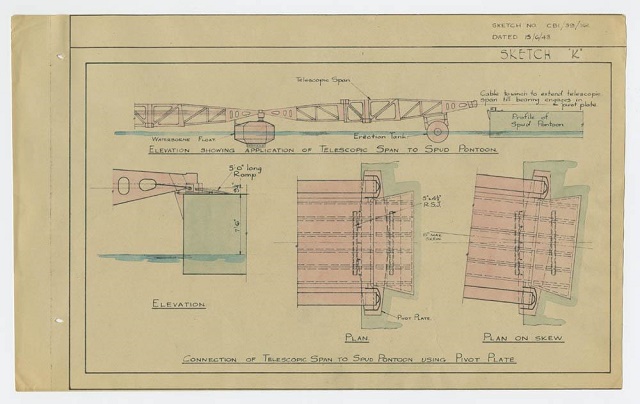The Normandy invasion of D-Day is mostly known for its eminent portrayal of the horrors of war. However, those who study more practical aspects of history may know the event for its use of the Mulberry harbors, which helped transport troops to the stormed beaches during the assault. At least one American is very well aware of them, and is now selling the written plans which helped build the harbors for the Normandy invasion at an auction in New York.
The diagrams are expected to fetch a fairly hefty price tag due to their antiquity as well as their overall historical importance. With the beaches already overrun, it would have been nigh impossible for the Allied troops to take over an existing port during the Normandy invasion, thus the need for the Mulberry harbors. These would float at sea and connect to the beach, allowing for the smooth transport of soldiers as well as tanks and other equipment.
Even the Nazis, including Hitler’s favored architect Albert Speer, thought the Mulberry harbors to be ingenious inventions. They saw their beachfront defenses go to waste under the heavy assault waged by the Allies during the Normandy invasion simply because the Allies had thought up a thorough plan for getting themselves onto the beach in the first place. While the look of the Mulberry harbors bespeaks simplicity, it took years to actually develop them from the simple drawings that are now being sold, the Mail Online reports.
The drawings say nothing of the harbors’ size. They were in fact quite large, as was necessary for the sheer number of troops and tanks being transported. In fact, some of their remains are still scattered on the beaches to this day. The Normandy invasion helped turn the tide of the war, and the Mulberry harbors helped turn the tide of D-Day itself. Without them, Operation Overlord might easily have failed. The Allies might never have stepped foot on the beaches at all.
The Normandy invasion and its importance are widely known, but that does not mean that new details do not still come to light every year, as is common with most historical conflicts. For many, the Mulberry harbors are a new revelation. While never truly a secret, their usage is simply not a fact widely studied by most casual students of WWII. Now, to one lucky purchaser at a New York auction, the Normandy invasion can be studied in a whole new way thanks to the sale of these plans, which outline the prototypes for one of the most important inventions of the Second World War.
